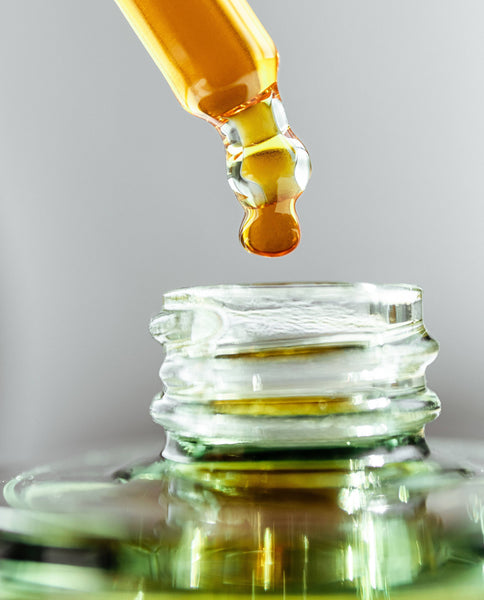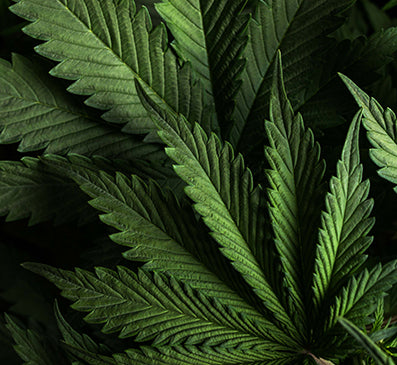Topicals
Topicals are designed to be applied directly to the skin.
Because they’re applied directly to the skin, CBD topicals could be effective in restoring the skin’s healthy appearance.
The effectiveness of the CBD products is also related to considerations like the quality of the other ingredients contained in the products!
CBD topicals are most popular as:
- Balms
- Lotions
- Salves
- Creams
How does CBD work?
So, we know that – as a cannabinoid – CBD interacts primarily with your endocannabinoid system. The human body naturally produces its own version of these compounds – another discovery that widened our understanding of human biology.
Endogenous cannabinoids – or endocannabinoids – are naturally occurring neurotransmitters. The “endo” prefix just means “within” or “inner” – indicating that they’re produced inside your body.
These neurotransmitters send signals that help your ECS regulate important processes like immune responses, stress, mood, and physical discomfort. When one of these processes is out of balance, your ECS produces them to help regulate your body. Once the endocannabinoids fulfill their functions, enzymes in the ECS break them down again.
So what does this have to do with CBD?
Well, although the results are the same, different studies have different theories. Many experts believe that CBD stops enzymes from breaking down the body’s natural endocannabinoids, allowing them to have more of an effect. Because researchers are still learning about the ECS, some believe CBD could be binding to a receptor they haven’t found yet.
While some scientific perspectives differ, most agree on the general effects caused by this interaction. But what exactly are these effects, and what are their potential benefits to us?
What does CBD feel like?
Every person is different, so the sensations you feel when you take CBD can vary. Generally, its effects are subtle but engaging, leaving you calm and relaxed. Depending on the product and the delivery method, it can take anything from 15-45 minutes for the effects to take place.
CBD doesn’t alter your mental state and will not leave you feeling intoxicated. Now, that doesn’t mean it doesn’t feel good! It stimulates many beneficial processes throughout the body that add up to a uniquely pleasant experience.
The relaxation can be euphoric in its own right, but this is down to the mellowing effects of relief.
Are there side effects to taking CBD?
As with any health product, you should consult with your physician before use.
Which CBD products are right for me?
Well, this depends on the benefits you’re most interested in.
For general wellness, tinctures are always a good option. Tinctures offer a lot of versatility – you can take them sublingually or by ingestion. As a high-concentration solution, you can manage the dosage and take it in fun ways, like dropping a serving portion in your favorite beverage.
These qualities make it a beginner-friendly product for people new to CBD treatment, and for people interested in using CBD daily.
Topicals are still the number one product type for dealing with localized and surface ailments. Depending on your needs, you can opt for a daily balance oil or a relief balm that can target tense areas.
At ANTARA, we also offer collections – curated hampers of complementary CBD products that focus on specific effects.
How much do I take of a particular product?
There is no set rule for how much of a given product you should take, especially with the variables involved. The delivery method can change how much CBD you ultimately react to. Your tolerance to certain products might even change over time.
Of course, the biggest variable is that you can often buy the same product at different concentrations. If you’re new to CBD, the rule of thumb is: that it’s better to start low and build to the desired level. Of course, the biggest variable is that you can often buy the same product at different concentrations. If you're new to CBD the rule of thumb is that it's better to start low and build to the desired level. While using CBD daily, pay attention to your body's response and adjust as needed.
That said, CBD intake doesn’t have to be a guessing game – in fact, it shouldn’t be. All of our products come with detailed instructions and information to help you regulate your intake and manage your experience.
What to look for in a CBD product
The world of CBD is vast and constantly expanding. As exciting as this is, it can be a little intimidating if you’re not sure where to start. So what qualities should you look for in CBD products and the vendors that sell them?
Well, we can only start with ourselves.
Guiding principles
The ANTARA Organics Collection was born out of a desire to provide a deeper sense of wellness in our constantly connected world. As a result, our model is driven by a set of ethics that promote sustainability, community empowerment, and clean production practices.
Sustainable sourcing
Our hemp is sourced locally. We partnered with an organic farm in Colorado, where our products are made, which provides a more environmentally friendly seed-to-shelf cycle.
Clean extraction process
Our local distillation partner uses a patented extraction method that completely removes harsh chemicals from the process. The result is a self-cleaning extraction process similar to cold press technology – without the additives.
Cruelty-free, environmentally friendly
As a vegan company, we use 100% cruelty-free formulas, and our box-free products are stored in recyclable glass bottles.
Health-first approach
When it comes to our products, we’re governed by quality, transparency, and mindfulness. ANTARA products come with extensive insights to help you make informed decisions, with information on:
- Key ingredients
- Serving ratios
- How-to-use instructions
- Description of the effects
We use full-spectrum hemp extract, which contains CBD and all the naturally occurring compounds in the plant, such as essential oils, fatty acids, terpenes, and other cannabinoids.
Terpenes are aromatic hydrocarbons found in plants. They are the reason lavender, eucalyptus, and orange have their distinct smells. Aromatherapy oils and other holistic medicine rely on the mood-lifting properties of terpenes. The hemp plant contains over 100 terpenes, with beneficial properties that work together with cannabinoids.
Full-spectrum CBD has been found to be more effective than CBD isolate, as it incorporates the “entourage effect,” which magnifies the plant’s benefits when all the compounds work together.
Does CBD Expire and Does CBD Oil Go Bad?
Much like any other consumable product, CBD does expire. Over time, CBD can lose its potency, its effectiveness and eventually become “stale.” The shelf life of CBD products can vary depending on various factors such as the type of product (CBD oil tincture vs. CBD balm), the ingredients used, how it is stored, and whether or not the product uses preservatives to keep a longer shelf life.
In general, CBD oil typically has a shelf life of about 1 to 2 years. ANTARA Organics’ tinctures and balms have a shelf life of 2 years and our CBD oil and bath truffles have a shelf life of about 18 months. To maximize the shelf life of our CBD products, it's crucial to store them properly. You may use general tips for extending the shelf life of CBD products, like storing CBD products in a cool, dark place, away from direct sunlight, and sealing the container tightly to reduce exposure to air. Exposure to sunlight/heat and air can lead to oxidation and degradation of CBD.









